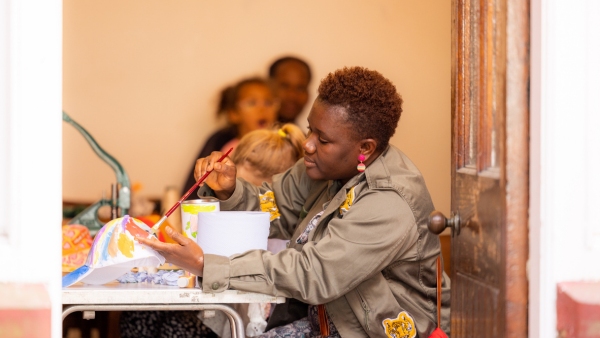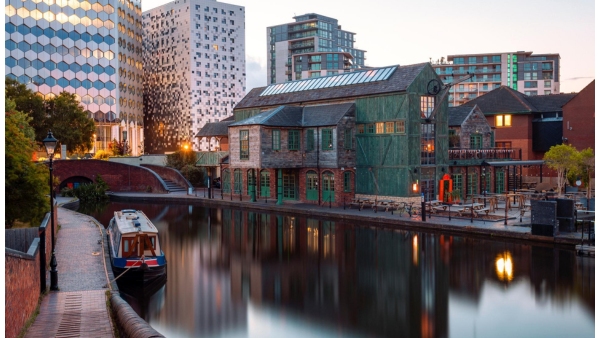To be honest, I am having a bit of a crisis of faith right now. It may have started when I was recently reminded of the massive internal Home Office study of prisoner rehabilitation schemes around the world. It found only one strong correlation; an inverse one between the rigor of a scheme’s evaluation and evidence of it performing significantly better than no scheme at all.
Adding to my frailty, I’ve also been to a couple of public sector events this week that – despite the best intentions and endeavours of the organisers – felt listless and dispirited (although at one this may have had something to do me using my five minutes to subject everyone to my own most pessimistic take on the world).
As regular readers will know, I am always going on about the need for civic innovation and about the possibility that public services can be redesigned so that they are more socially productive; in other words better at helping people meet their own and each other’s needs. The idea is that even when the market is depressed and public spending being cut we can still make life better.
The cloud of doubt hanging over me is whether it really is possible to generate and then scale useful social innovations without spending market money we haven’t got or needing state money which isn’t available.
Perhaps it is desperation which has led me to grab on to two ideas today. The first – which someone else told me about and which apparently already happens in another country - is clever and credible, the second – which is all mine – is whimsical and possibly plain silly.
Idea one isn’t anything to do with public services or civic efforts – it’s simply a way to make people a little better off. The idea is ‘compare the rate day’.
As we all know, the way lots of marketing works is to offer a great deal for the new customer and then gradually make this a worse deal relying on inertia to keep us paying. This is why many millions of people are paying more on their energy bills than they need to, more on their mortgages, more on their insurance bills and probably accepting bad deals on pensions and annuities. There are more and more comparison sites to try to encourage us to get better deals, and regulators have made it easier to swap, but still a combination of lack of time, lack of energy and confusion in the face of so much information stops us.
This is where ‘compare the rate day’ comes in. It is a single day backed by Government, the media and industry when we are all encouraged to look at the bills we are paying or benefits we are receiving in a major area, say energy. The focus on that day would be enough to dispel inertia. It would also encourage the press and various experts to provide accessible information so we would all have easy advice on how to get a better deal. As for industry, it would know it had to compete all out to keep or win empowered customers with a whole market to choose from (and that there would be much less to gain from trying then to exploit people as the day would happen all over again a year later).
The second idea came to me today as I carried a cake in a clear Tupperware box to a dear friend. As I travelled from Bond Street to Little Venice four different people made funny little comments to me. For example, as I fumbled for my Oyster Card, the lady at the ticket barrier at Paddington said ‘better not let me hold your cake dear. I might run off with it’.
So how about ‘say hi to stranger day’. This would go beyond simply encouraging people to be friendly to each other. That would rely too much on initiative and there is a danger that it is intrusive – what if you don’t really want to join in? That’s why the idea is that this is not only a day when we are urged to talk to strangers but also that we are encouraged to wear or carry something which provides a conversation point (by so doing indicating that we are up for a chat).
From today's experience, it is clear that someone who carried a cake around on ‘say hi to strangers day’ would find themselves in almost constant cheerful badinage with the citizenry. But, then again, so would someone wearing a big flowery hat or a T shirt saying ‘I am not an innocent bystander’.
I have a horrible feeling that this is one of those blog posts which will deeply embarrass me when I look back on it, but for now, at least, I feel a bit more cheerful.
Related articles
-
Open RSA knowledge standards
Alessandra Tombazzi Tom Kenyon
After investigating ‘knowledge commons’, we're introducing our open RSA standards and what they mean for our practice, products and processes.
-
RSA Catalyst Awards 2023: winners announced
Alexandra Brown
Learn about the 11 exciting innovation projects receiving RSA Catalyst funding in our 2023 awards.
-
Investment for inclusive and sustainable growth in cities
Anna Valero
Anna Valero highlights a decisive decade for addressing the UK’s longstanding productivity problems, large and persistent inequalities across and within regions, and delivering on net zero commitments.




Be the first to write a comment
Comments
Please login to post a comment or reply
Don't have an account? Click here to register.